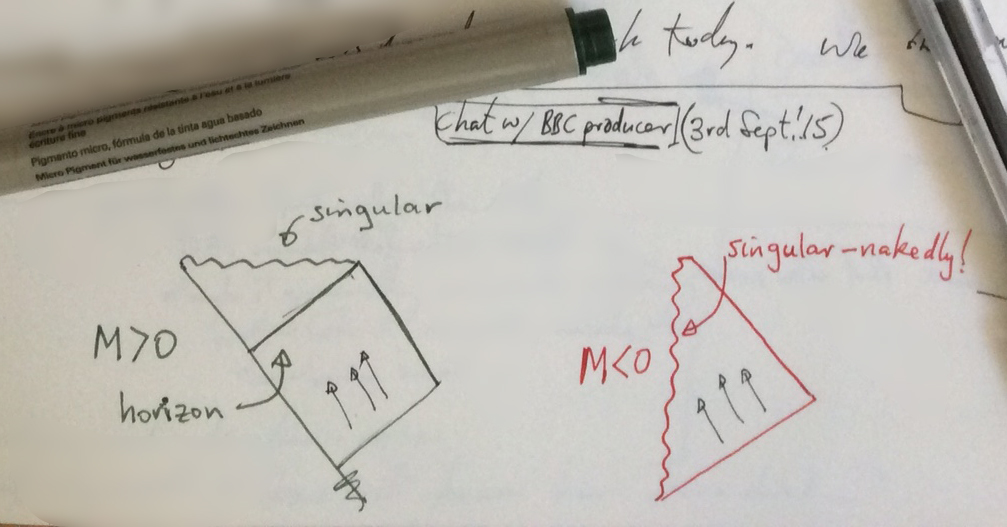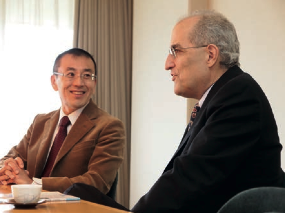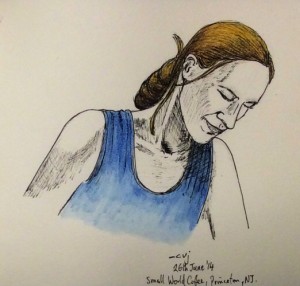[Update: Over the months following the announcement, doubt was cast over exactly what BICEP2 saw, and now it seems that the signal announced by BICEP2 is consistent with polarisation produced by galactic dust. See here.]
I’m actually in hiding and silence for a week. It is Spring Break and I have locked myself away in a seaside town to do some writing, as I did last year. But I must break my silence for a little while. Why? Well there’s been a really great announcement in physics today and while being very happy that it is getting a lot of press attention – and it should since the result is very important and exciting – I’ve been stunned by how confusingly it has been reported in several news reports. So I thought I’d say a few things that might help.
But first, let me acknowledge that there’s a ton of coverage out there and so I don’t need to point to any press articles. I will just point to the press release of the BICEP2 collaboration (yes, that’s what they’re called) here, and urge you once you’ve read that to follow the link within to the wealth of data (images, text, graphs, diagrams) that they provide. It’s fantastically comprehensive, so knock yourself out. The paper is here.
I keep hearing reports saying things like “Scientists have proved the Big Bang”. No. The Big Bang, while an exciting and important result for modern cosmology, is very old news. (You can tell since there’s even a TV comedy named after it.) This is not really about the Big Bang. This is about Inflation, the mechanism that made the universe expand rapidly from super-tiny scales to more macroscopic scales in fractions of a second. (I’ll say more about the super-tiny below).
I also hear (slightly more nuanced) reports about this being the first confirmation of Inflation. That’s a point we can argue about, but I’d say that’s not true either. We’ve had other strong clues that Inflation is correct. One of the key things that pops out of inflation is that it flattens out the curvature of universe a lot, and the various observations that have been made about the Cosmic Microwave Background over the years (the CMB is that radiation left over from when the universe was very young (about 380,000 years old – remember the universe is just under 14 million years old!)) have shown us that the universes is remarkably flat. Another previous exciting result in modern cosmology. Today’s result isn’t the first evidence.
So what is today’s exciting news about then? The clue to the correct […] Click to continue reading this post →
 Snapshot of my doodles done while talking on the phone to a BBC producer about perhaps appearing in a film discussing anti-gravity*. I explained lots of things, including why General Relativity does not seem to like negative mass, partly because they have something called a “naked singularity”, which is a big problem. Only after the call ended did I recall that in 1999 I co-authored a paper in which we discovered […] Click to continue reading this post
Snapshot of my doodles done while talking on the phone to a BBC producer about perhaps appearing in a film discussing anti-gravity*. I explained lots of things, including why General Relativity does not seem to like negative mass, partly because they have something called a “naked singularity”, which is a big problem. Only after the call ended did I recall that in 1999 I co-authored a paper in which we discovered […] Click to continue reading this post 



 There’s an SCSS today, at USC! (Should have mentioned it earlier, but I’ve been snowed under… I hope that the appropriate research groups have been contacted and so forth.) The schedule can be found
There’s an SCSS today, at USC! (Should have mentioned it earlier, but I’ve been snowed under… I hope that the appropriate research groups have been contacted and so forth.) The schedule can be found 







